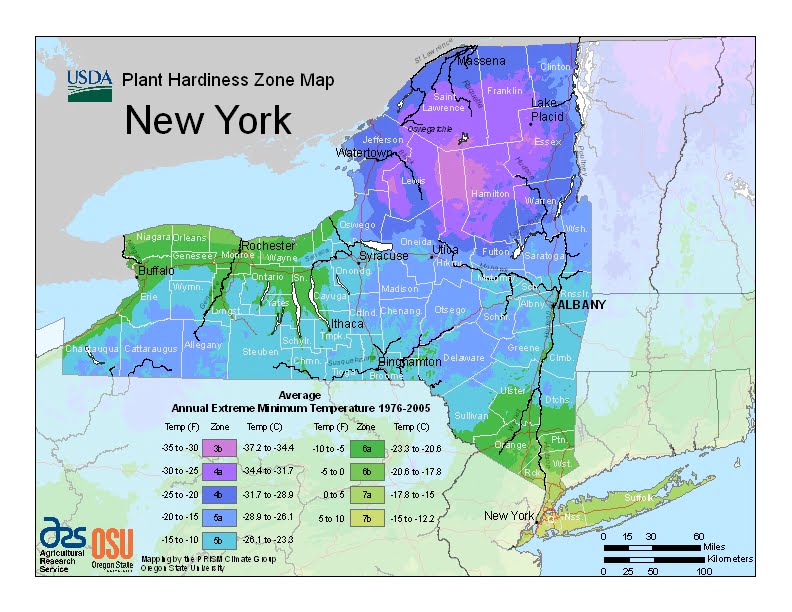
New York has a humid continental climate, though New York City has a humid subtropical climate, ranging from USDA Plant Hardiness Zones 3b through 7b. Temperatures can vary per different areas of the state so get to know which zone your city is located in so that you can address and avoid potential issues before they become problematic.
The USDA zones map is a useful system for determining what plants will survive and grow in certain areas ofNew York.
Understanding how these hardiness zones work means you can choose the right planting time, and optimize growing for your climate.
Weather in New York is heavily influenced by two continental air masses: a warm, humid one from the southwest and a cold, dry one from the northwest.
Downstate New York, comprising New York City, Long Island, and lower portions of the Hudson Valley, has rather hot summers with some periods of high humidity and cold, damp winters which are relatively mild compared to temperatures in Upstate New York due to the downstate region’s lower elevation, proximity to the Atlantic Ocean, and relatively lower latitude.
Upstate New York experiences warm summers, marred by only occasional, brief intervals of sultry conditions, with long and cold winters.
Western New York, particularly the Tug Hill region, receives heavy lake-effect snows, especially during the earlier portions of winter, before the surface of Lake Ontario itself is covered by ice.
The summer climate is cool in the Adirondacks, Catskills, and at higher elevations of the Southern Tier.
Buffalo and its metropolitan area are described as climate change havens for their weather pattern in Western New York.